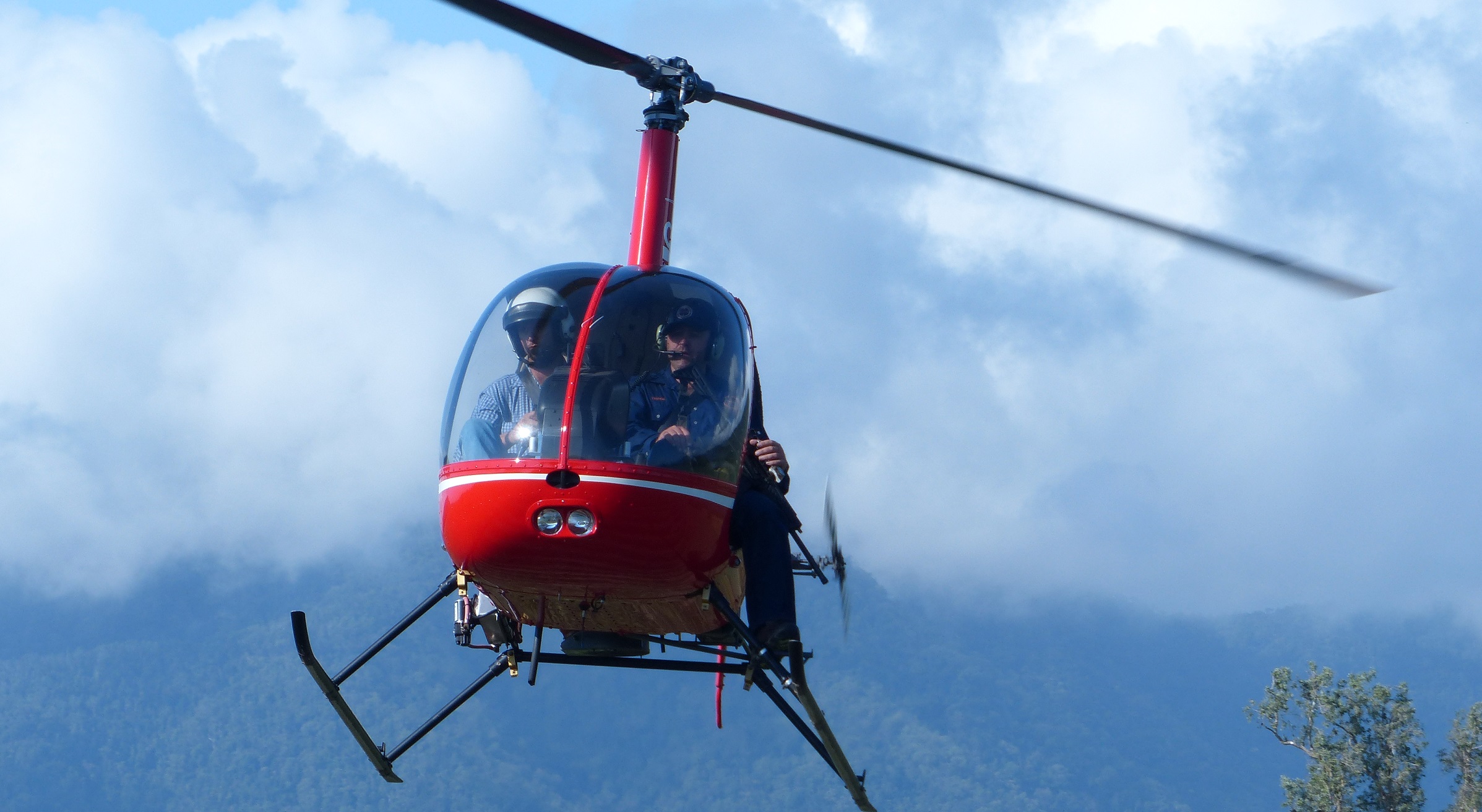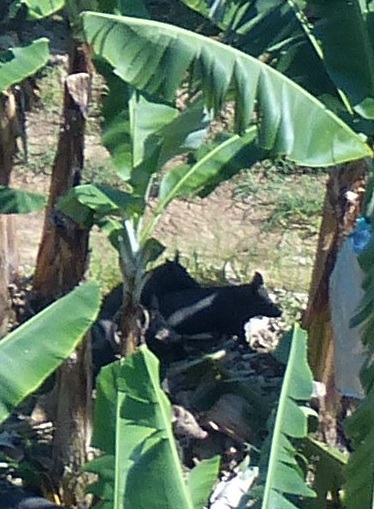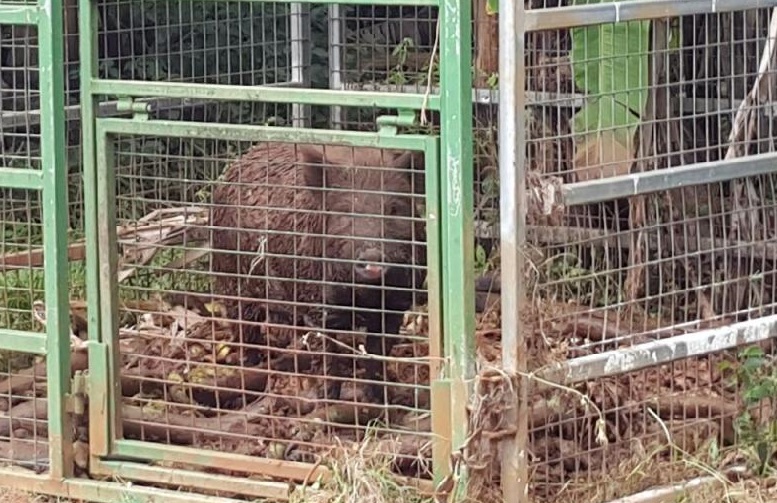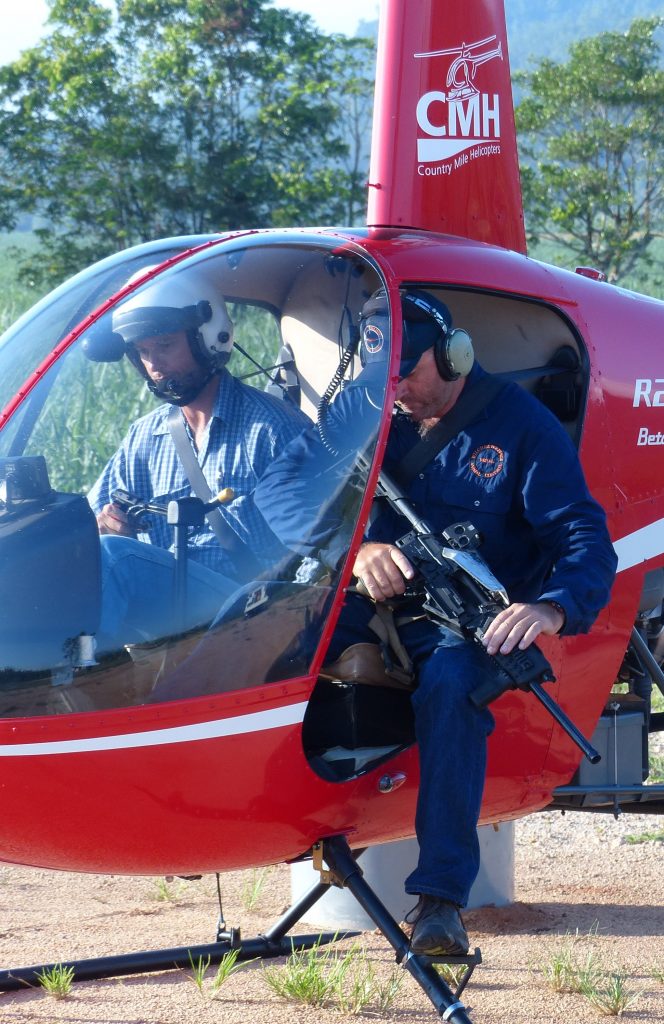A renewed scourge in Queensland’s banana heartland has forced growers to leave nothing to chance, addressing a very real threat in the on-going challenge to contain Panama TR4.
Feral pigs have been in the direct line of fire for growers in the Tully Valley, who have joined forces to protect their industry and attempt to bring under control plague proportions of the animals, throughout the Cassowary Coast.
By Sonia Campbell
Feral pigs have long been traversing the Queensland landscape, causing untold damage to agriculture, harbouring disease and wreaking general havoc as an environmental pest.
However, since the detection of Panama tropical race 4 (TR4) in the Tully Valley in 2015, they have also been recognised as a serious vector of the soilborne fungal disease.
With populations of feral pigs in the Wet Tropics region widely viewed as having reached plague proportions in recent years, it’s left North Queensland growers with a very real fight on their hands to bring growing infestations under control.
Recognising the risk to industry, a Feral Pig Management Working Group was established by the Australian Banana Growers’ Council (ABGC) in September of this year.
Led by ABGC director and Far Northern producer Leon Collins, the group was formed to promote a co-ordinated effort on feral pig management throughout northern Queensland, involving government, growers and community.
Prior to the official establishment of the working group, Mr Collins said about 10 major stakeholder growers had already come on board—including banana and cane growers, as well as Tully Sugar.
Since August, they have personally funded a coordinated aerial pig control shooting program, with staggering results.
“People don’t realise what sort of pig pressure we’ve had. In the last two years, it has blown out of control,” Mr Collins said.
“We’ve got to take them out. We can’t wait. That’s why we decided that the quickest knockdown for us to start, was to utilise a helicopter and aerial shoot.”
“And it’s worked. In three months we have taken out almost 700 pigs. And it doesn’t stop. Every time we go up we get more.”
TAKING TO THE SKIES
The growers enlisted the help of experienced rural helicopter pilot Peter Liddle and licensed professional marksman Trevor Williamson to carry out the aerial shooting program.
At $650 per hour, it’s a costly exercise.
However, it is also the most rapid and effective means of addressing a problem that is potentially putting an entire national industry in jeopardy.
“It’s more urgent now because of TR4. Growers have spent a huge amount of money on pig control. Some of the figures are frightening. But we don’t have any other option,” Mr Collins explains.
“TR4 is a risk to all agricultural areas, everywhere. In Tully, most of your big banana growers are big cane growers as well.
“On our farm alone, we’ve spent $68,000 on pig control so far this year. That’s just us. We’ve spent $128 per hectare. That doesn’t include biosecurity, just pig control. Which has also involved manufacturing traps, trapping and fencing.”
COUNTING THE COST
Paul Johnston who farms bananas, sugarcane and cattle in the Tully Valley, has also spent countless time, money and effort addressing feral pig management across his farming estate.
“We’ve caught more than 370 (pigs) on our farm so far this year. That’s just shooting them and trapping them,” Mr Johnston said.
“We’ve always had pigs and we’ve always been trapping them, forever and a day, but this is the most we’ve ever got, and we haven’t even put a dint in them.”
Mr Johnston is part of the collective that continues to fund the co-ordinated aerial shooting operation throughout the Tully Valley and said it was the only way of winning the war against the menacing pest.
“Before that (the aerial shooting) we weren’t even keeping up to them,” he said.
“In a couple of weeks, you can get 100 pigs from a chopper, you won’t get that amount with traps.
You’ll get a couple here and there, but at the moment they are here in big numbers and we just can’t keep up.”
Mr Johnston also runs up to 15 pig traps on his farm, which are checked each day and rebaited when needed. He estimates the cost of his on-farm trapping program and his investment in aerial pig management, would exceed $50,000 for the year.
However, he said there was very little alternative.
“We can control people movement and vehicle movement on farm, but not these pigs. Every morning I look around and you can see where they’ve been the night before,” he said.
“Spreading Panama is our biggest concern. At the moment they are rooting up the soil and shortly, I have to plant bananas and they will be doing damage to the small bananas as well.
“Even when they are rooting up the soil looking for grubs they can plough up a whole creek bed and then you get heavy rain and it all goes down the creek. So it’s not only a TR4 risk but an environmental impact, as well.”
LONGER TERM SOLUTION REQUIRED
Mr Collins said while growers, ABGC and the Tully Cane Productivity Services were currently funding the aerial shooting operation, a longer term solution would be needed involving government and industry support at multiple levels.
“From 2001 to 2006 we had the last feral pig management program running here. We took 6000 pigs out of the Tully Valley alone during that program. It worked very well and for three years after that program, pigs were not a problem. “That program was funded by everyone, banana growers, canegrowers, mills, council, State Government and Federal Government. Right now, it’s more than just about TR4, it’s about establishing a long-term management plan to address feral pig populations, well into the future.”
People don’t realise what sort of pig pressure we’ve had. In the last two years, it has blown out of proportion.
UNITED FRONT
Efforts to control feral pig numbers throughout the Cassowary Coast is being addressed by multiple stakeholders.
As well as the ABGC’s Feral Pig Management Working Group, an Executive Oversight Committee is now working towards a co-ordinated and integrated approach to feral pig control as part of the Cassowary Coast Regional Council Feral Pig Management Strategy.
Membership organisations that are represented on the Oversight Committee include; ABGC, Canegrowers (Innisfail & Tully), Tully Sugar Ltd, MSF, Cassowary Coast Regional Council, Queensland Department of Agriculture and Fisheries/ BQ, Queensland Parks and Wildlife, Terrain NRM and the Department of Defence.
Innisfail Babinda Cane Productivity Services (IBCPS) have a short term contractor helping cane growers with pig management.
Banana growers have been collaborating with IBCPS to conduct a co-ordinated baiting program throughout the Innisfail area, to try and create a sustainable management program across the catchment.
WEIGHING UP THE RISK
Innisfail banana grower Shannon Paton has been hunting feral pigs for about 15 years and knows all too well the risk they pose to agriculture and the environment.
On his East Palmerston banana property he regularly hunts and traps wild pigs that have entered his land, animals which are often caked in thick mud and dirt, after wallowing beside a nearby creek bed or in a large pool of mud.
He knows the risks the animals pose to his farming operations and has attempted to quantify just how much dirt they can carry on their fur and feet, potentially spreading soil-borne disease.
“We got a boar in a trap. We took him and weighed him and he was 94kg. We then took him down to the wash bay and washed him down and he dropped 5kg neat after he drip-dried,” Mr Paton said.
“That was a smooth skinned boar, he didn’t have much hair on him, but he was still able to carry that much (soil) on him.”
Mr Paton estimates that 30 per cent of the feral pigs that come onto his land are covered in mud, causing him constant concern over the risk of TR4.
“Absolutely. Their numbers have certainly increased. It’s become an issue over probably the last three years now. As everyone is aware, since (Tropical) race 4 was detected here in the far north, we’ve had a lot of people put up fences and do the best that they can.
“You can fence your land and do the best that you can. But if you get a 120–140kg boar in particular, he’s going to go through a fence, regardless of whether you’ve got tucker there or not.”
We then took him down to the wash bay and washed him down…he dropped 5kg neat after he drip dried.
ON-FARM BIOSECURITY
When it comes to containing Panama TR4, on-farm biosecurity continues to be the banana industry’s best line of defence.
ABGC CEO Jim Pekin said while feral pig control was important for TR4 containment, boots and wheels coming onto farms were the major risk to manage.
“Since TR4 was first detected in Tully, many growers have implemented stringent on-farm measures to protect their farms against the disease.”
“These processes give the industry the best chance of stopping further spread of this disease which can be spread through soil and plant material.”
“The key message is, ‘Come clean, leave clean’.”
NOT JUST A POT SHOT
From the cockpit of an R22 helicopter, professional shooter Trevor Williamson has a birds-eye view of his target.
The skilled marksman, along with experienced rural pilot Peter Liddle, have been assisting growers in the concentrated aerial shooting program in the Tully Valley in recent months.
Together they work in unison.
Communicating in perfect harmony to first seek out their target and then position the chopper before taking aim.
It’s rare for Mr Williamson to miss his target, however he says getting the right shot comes down to the skill of the pilot.
“It’s not as simple as people think,” he explains. “Aerial shooting is an extremely effective tool, but in the bananas and fringing creeks it takes a lot of skill to do what we have to do. And, a lot of the skill comes down to the helicopter pilot, because they have to put the stock in the right position to shoot or you won’t get them.”
In some cases, smoke is used to flush out pigs found in heavily grassed areas adjacent to banana farms.
This adds another element to the aerial program.
Program co-ordinator Leon Collins praised both Mr Liddle and Mr Williamson for their efforts so far.
“The communication between the marksman and the pilot is fantastic, which leads to such a smooth flowing operation,” he said.




